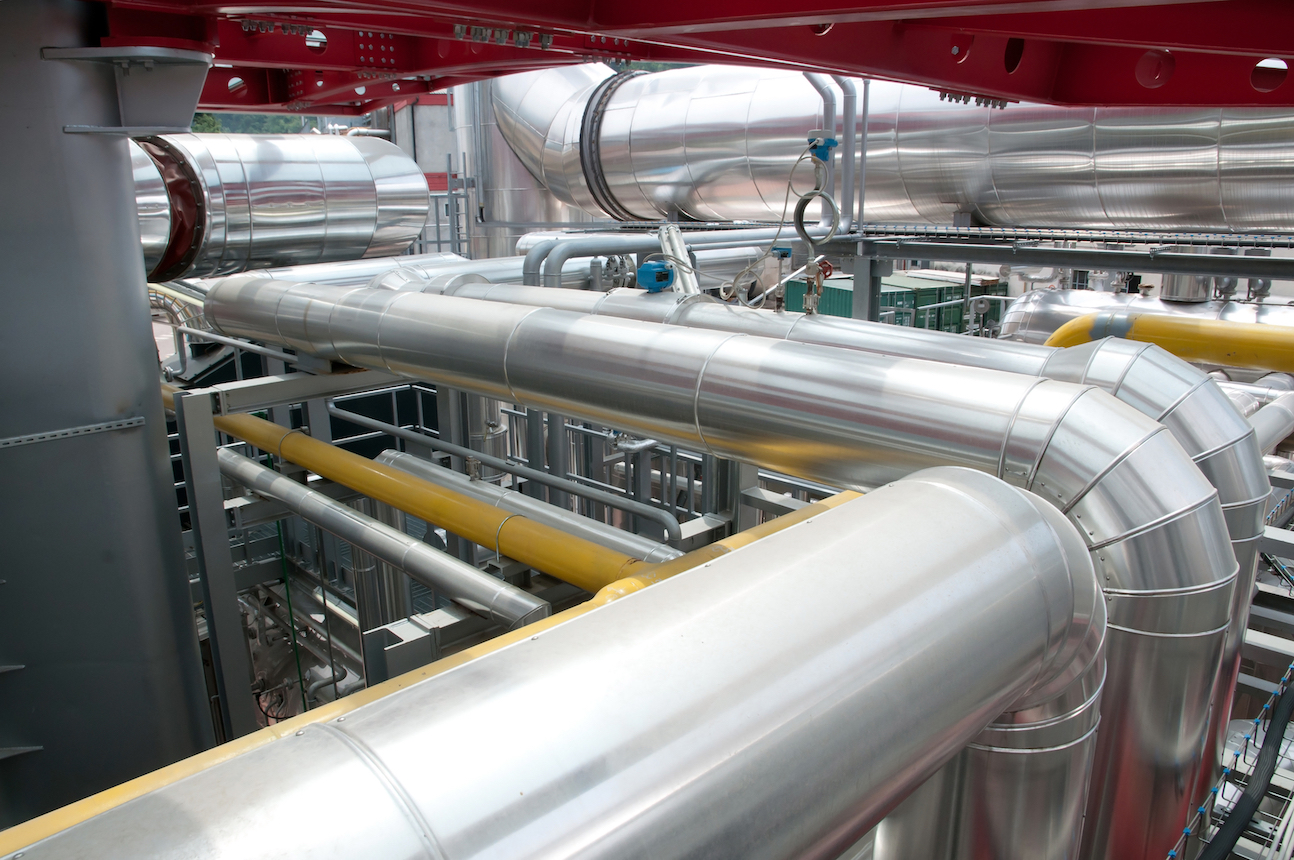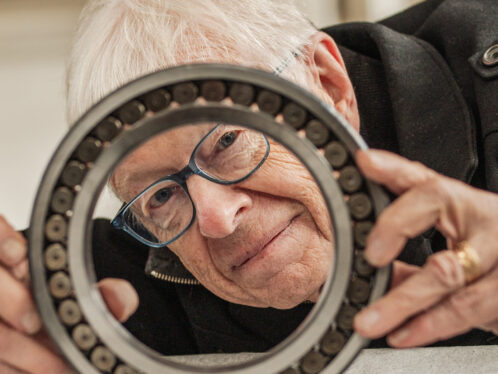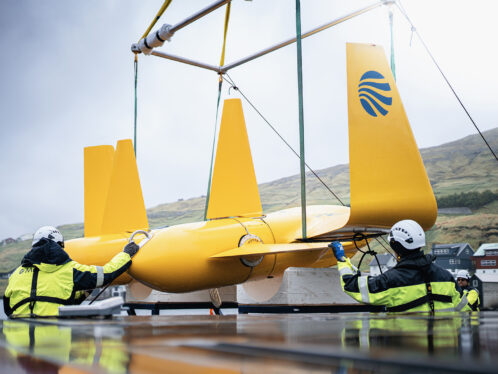
Helicopters in top flight
What started as an Italian family-run business in the early days of aeroplanes has become, through a series of partnerships, innovations and alliances, a top producer of helicopters worldwide.
Summary
Because the pitch angle of a helicopter blade changes with each rotation, its pitch control mechanism gets a real workout. The life span of the bearings is measured in hours – perhaps as few as 200 hours in tough conditions or 10 times that in a less-demanding environment.
To address this problem, three years ago AMPEP plc, a 40-year-old British company (and a subsidiary of Sarma, an SKF company since 1988) developed ceramic-coated self-lubricating spherical bearings. “Our ceramic bearings last three to five times longer than the previous world-beating technology, which was also ours,” says Andrew Grogono, managing director of Ampep plc. “They reduce downtime significantly and therefore reduce operating costs for helicopter main-rotor control mechanisms.”
All European helicopter producers are using these ceramic bearings (Ampep XLNT) in various main-rotor applications, both civil and military. Agusta, whose partnership with SKF goes back some 20 years, has been testing them for two years and will be using them on the EH101 programme starting in 2004.This ceramic technology has already been successfully introduced on the NH90 programme of NH Industries, a consortium formed by AgustaWestland, Eurocopter and Fokker Aviation.
The area around Cascina Costa, a small town about 35 kilometres north of Milan, Italy, has had a long association with military transportation. The Italian cavalry maintained stables here because the flat, fertile land was good for horses. The topography also proved good for aeroplanes.
The person responsible for the transformation of the town’s vocation was Giovanni Agusta, founder of Agusta (now AgustaWestland), the company that bears his name. Agusta established a licensed aeroplane production, maintenance and spare-parts supply activity in Cascina Costa in 1923.
In the 1940s, Domenico Agusta, Giovanni’s son, who was now in charge of the business, decided to set up a company to take advantage of the booming motorcycle sector and the high level of local engineering expertise. This became Meccanica Verghera (MV Agusta), which produced and marketed motorcycles between 1952 and 1976.
Move to helicopters
The real industrial breakthrough for the company came in 1952 when Agusta signed an agreement with the US company Bell Helicopter to produce its helicopters under licence. Similar accords were reached in the 1960s with the US helicopter producers Sikorsky, Boeing and McDonnell Douglas.
But Agusta did not limit itself to production under licence. It soon developed an independent R&D capability that led to the construction of nine prototypes, all flight-tested with success.
Agusta’s place amongst the leaders in vertical flight was secured in 1971 with the first flight of the A109 twin-turbine helicopter, a design with innovative features and high performance that was realised entirely at Cascina Costa. Domenico died shortly before its inaugural flight.
Two years later, Agusta signed a contract of cooperation with state-owned Ente Partecipazioni e Finanziamento Industria Manifatturiera (EFIM), which acquired 51 percent of the company’s shares. EFIM embarked on an aggressive programme of acquisition and expansion to create the Agusta Group, an aerospace corporation involved in aircraft, helicopter and systems production. The following years saw a flurry of activity by the company.
European made
One of the first initiatives, in the late 1970s, was a partnership with UK-based Westland to design the EH101, a 15-tonne military helicopter. This partnership would prove important to the future of both companies. In 1983, Agusta unveiled the four-tonne A129 Mangusta multi-role combat helicopter, the first combat helicopter to be designed and produced entirely in Europe.
In 1991 the company had 10,000 employees and was running deeply in the red. A reorganisation plan was initiated in 1992 with the arrival of a new management team. Helicopters were identified as the company’s core business and all non-core assets were sold off. Modern management techniques were introduced and production facilities streamlined. By 1994 the workforce had been reduced to 5,000, though the number of employees devoted to R&D remained constant at 1,000. In 1995 the prototypes of two new products, the twin-engine A109 Power and the single-engine A119 Koala, were flown.
All these actions resulted in a new competitiveness, and the company became part of the Italian corporation Finmeccanica. In 1998, Bell Helicopter Textron and Agusta created Bell/Agusta Aerospace Company. Some 46 years after Agusta had licensed technology from Bell, the two became partners in the development of the new medium, Agusta AB139 helicopter, as well as part of the BA609 tiltrotor (a combination helicopter/turboprop aircraft) programme.
Fruitful alliance
In spite of its new management successes and revitalised product line-up, Agusta realised that it could not compete alone in the world helicopter market. Development costs were high and the competition was fierce from American and European firms. The new challenges of globalisation in the marketplace called for a strategic alliance. The choice was Westland, already a partner in the EH101 programme. Agreements were reached between Finmeccanica and GKN (Agusta and Westland’s shareholders, respectively) in April 1999. The 50-50 joint venture became fully operational on January 1, 2001. After only a year of operation, the new company ranks first in turnover among the world’s helicopter companies.
“The merger was done to strengthen our presence on the market and reduce costs, and it was a perfect fit,” says Giuseppe Orsi, Agusta’s managing director. “Our products and those of Westland integrated perfectly. There was no product overlap, and our histories were similar. Plus our markets were complementary.”
Today AgustaWestland boasts almost 9,000 employees and in 2002 billed revenues of 2.7 billion euros. Earnings before interest and taxes (EBIT) have increased annually since the company was formed three years ago, proving that cost synergies have been achieved.
New strategy
Industry-wide in 2002, 772 helicopters were built worldwide for a total production value of 5.2 billion US dollars, according to the International Directory of the American Helicopter Society. Competition for this market comes from five major companies: AgustaWestland and Eurocopter in Europe; Bell, Sikorsky, and Boeing in the United States. Orsi says that this number is likely to be reduced and is encouraging competitiveness and innovation to make sure that AgustaWestland will be one of the survivors. “Agusta had already identified, in the mid-1990s, a new strategy focused on two cornerstones, industrial alliances and partnerships, to produce competitiveness and technological innovation, and the product range to meet the new operational needs.”
The commercial market, which follows shorter-term economic trends, is volatile. Today about 40 percent of AgustaWestland’s sales are commercial. One of the most innovative products under development by Agusta is the BA609, the world’s first six-tonne tiltrotor. Twice as fast as a helicopter, the BA609 is expected to revolutionise corporate, rescue, medical and law-enforcement transportation when it goes into operation in 2007.
It tops off the widest range of helicopters in the industry, to make sure that the modern-day stable of Cascina Costa is well-equipped to lead any charge.




